Papers by ipek kay
Journal of Design Studio, 2020
This brief case study presents the general framework, process, and results of a vertical design s... more This brief case study presents the general framework, process, and results of a vertical design studio unit, titled Phenomenologies, at Istanbul Bilgi University’s Interior Design Program, supported by student work samples. Centralizing the tensions between interiority and the natural environment, the studio explores the role that nature plays in interior design. The process begins with an experiential inquiry on windows; later to be expanded and complexified by other spatial elements such as doors, stairs, ramps, and bridges. In the end, the students develop proposals for a research, learning, and recreation center that aims at problematizing and restoring our relationship to nature in the context of a lake ecosystem.
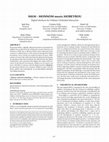
Interaction Design and Children
We present M&M, a digitally enhanced narrative environment for children that resulted from the co... more We present M&M, a digitally enhanced narrative environment for children that resulted from the collaborative projects Monnom and Mobeybou. M&M aims at offering children open-ended interaction scenarios to collaboratively create narratives through their bodily movements, voices, and the use of physical objects in space. M&M consists of sensors that collect data from the physical environment, an operating system that transforms the collected data into digital visualisations, and a projection that displays the output of the narration. In the physical environment, children can use objects and move with them to interact with the digital narrative elements. By interacting with the story elements, children connect with different cultures and environments, in an intercultural embodied storytelling experience. CCS CONCEPTS • Human-centered computing → Human computer interaction (HCI); Interactive systems and tools.
We present an online digitally-enhanced environment Monnom (https://www.playmonnom.com) for child... more We present an online digitally-enhanced environment Monnom (https://www.playmonnom.com) for children. Monnom offers body-object interaction and its system only requires a webcam. Its algorithm recognizes physical objects within view and drives the interaction with a digital canvas. By moving around and adding objects to their physical space, children can fictionalize its meaning and create their own place(s) within it with feedback from the digital environment.

In (D. Germanos & M. Liapi. Eds) Places for Learning Experiences. Think, Make, Change. 2015. pages 56-65, 2015
This paper discusses the paradoxes that arise from efficiency-driven approaches to child rearing ... more This paper discusses the paradoxes that arise from efficiency-driven approaches to child rearing in the digital age. Drawing from research on the intrinsically motivated nature of human learning and Winnicott’s pioneering work on the importance of “being held” and given license to play, I challenge the increasing pressures, especially on the very young, to meet so-called 21st century requirements. I reflect on what supportive environments for life-long learning may look like, and I identify
moments in the cycle of adult-supported self-directed learning, each of which calls for its own ambient qualities and spatio- temporal arrangements. To be viable, I claim, 21st century educationalists will need to put the learners back into the driver’s seat, mindful of their interests, contributions, and abilities to self-improve. And this turn requires careful attention to the psychological needs without which no child can thrive. The settings, or “holding environments” best suited to live up to this challenge, I conclude, will need to be flexible, inclusive, and informed by what happens outside their walls, but they can’t be place-less! Schools are one among other sites within a wider range of learning opportunities. Yet they can’t claim exclusivity. Nor can they be made solely accountable for student outcomes: the era of the citadel school is over. New settings are emerging, mostly hybrids, which today’s life-long-learners inhabit and traverse in novel ways.
Published in Books (in Tr and Eng) by ipek kay
It is a collective research project conducted with İpek Kay and A.Nil Şensu. In taarla: Istanbul... more It is a collective research project conducted with İpek Kay and A.Nil Şensu. In taarla: Istanbul için Öngörüler, edited by Ayşe Şentürer, Özlem Berber, Nurbin Paker, Aslıhan Şenel. (Istanbul: ITU Vakfı Yay., 2015): 166-169. ISBN: 9786054778850

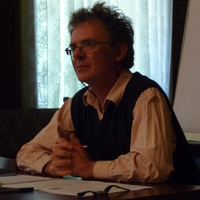


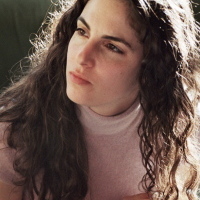
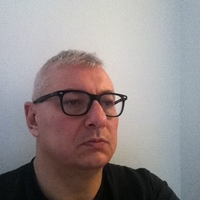

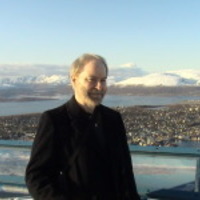


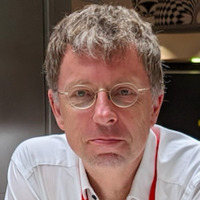
Uploads
Papers by ipek kay
moments in the cycle of adult-supported self-directed learning, each of which calls for its own ambient qualities and spatio- temporal arrangements. To be viable, I claim, 21st century educationalists will need to put the learners back into the driver’s seat, mindful of their interests, contributions, and abilities to self-improve. And this turn requires careful attention to the psychological needs without which no child can thrive. The settings, or “holding environments” best suited to live up to this challenge, I conclude, will need to be flexible, inclusive, and informed by what happens outside their walls, but they can’t be place-less! Schools are one among other sites within a wider range of learning opportunities. Yet they can’t claim exclusivity. Nor can they be made solely accountable for student outcomes: the era of the citadel school is over. New settings are emerging, mostly hybrids, which today’s life-long-learners inhabit and traverse in novel ways.
Published in Books (in Tr and Eng) by ipek kay
moments in the cycle of adult-supported self-directed learning, each of which calls for its own ambient qualities and spatio- temporal arrangements. To be viable, I claim, 21st century educationalists will need to put the learners back into the driver’s seat, mindful of their interests, contributions, and abilities to self-improve. And this turn requires careful attention to the psychological needs without which no child can thrive. The settings, or “holding environments” best suited to live up to this challenge, I conclude, will need to be flexible, inclusive, and informed by what happens outside their walls, but they can’t be place-less! Schools are one among other sites within a wider range of learning opportunities. Yet they can’t claim exclusivity. Nor can they be made solely accountable for student outcomes: the era of the citadel school is over. New settings are emerging, mostly hybrids, which today’s life-long-learners inhabit and traverse in novel ways.